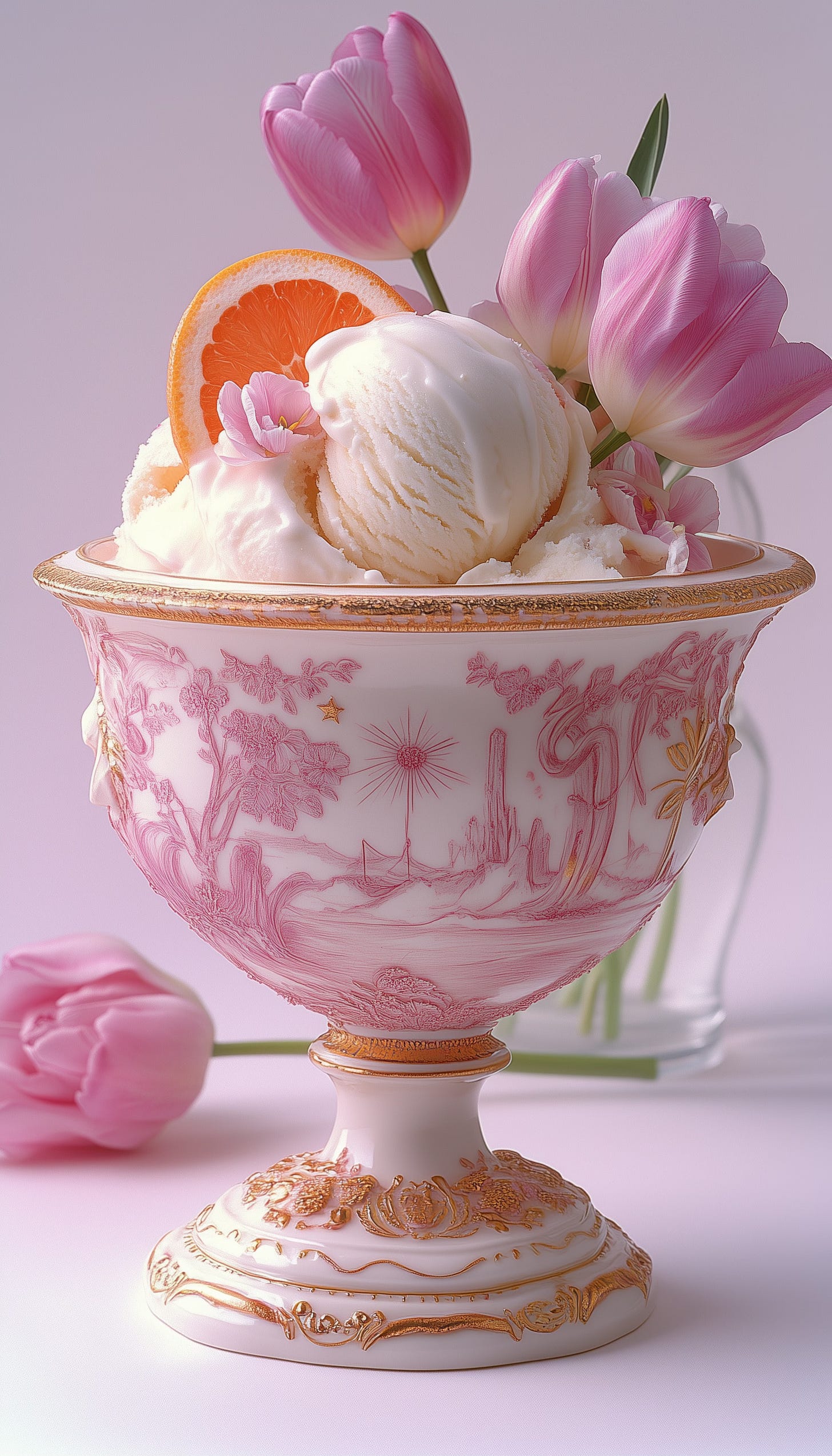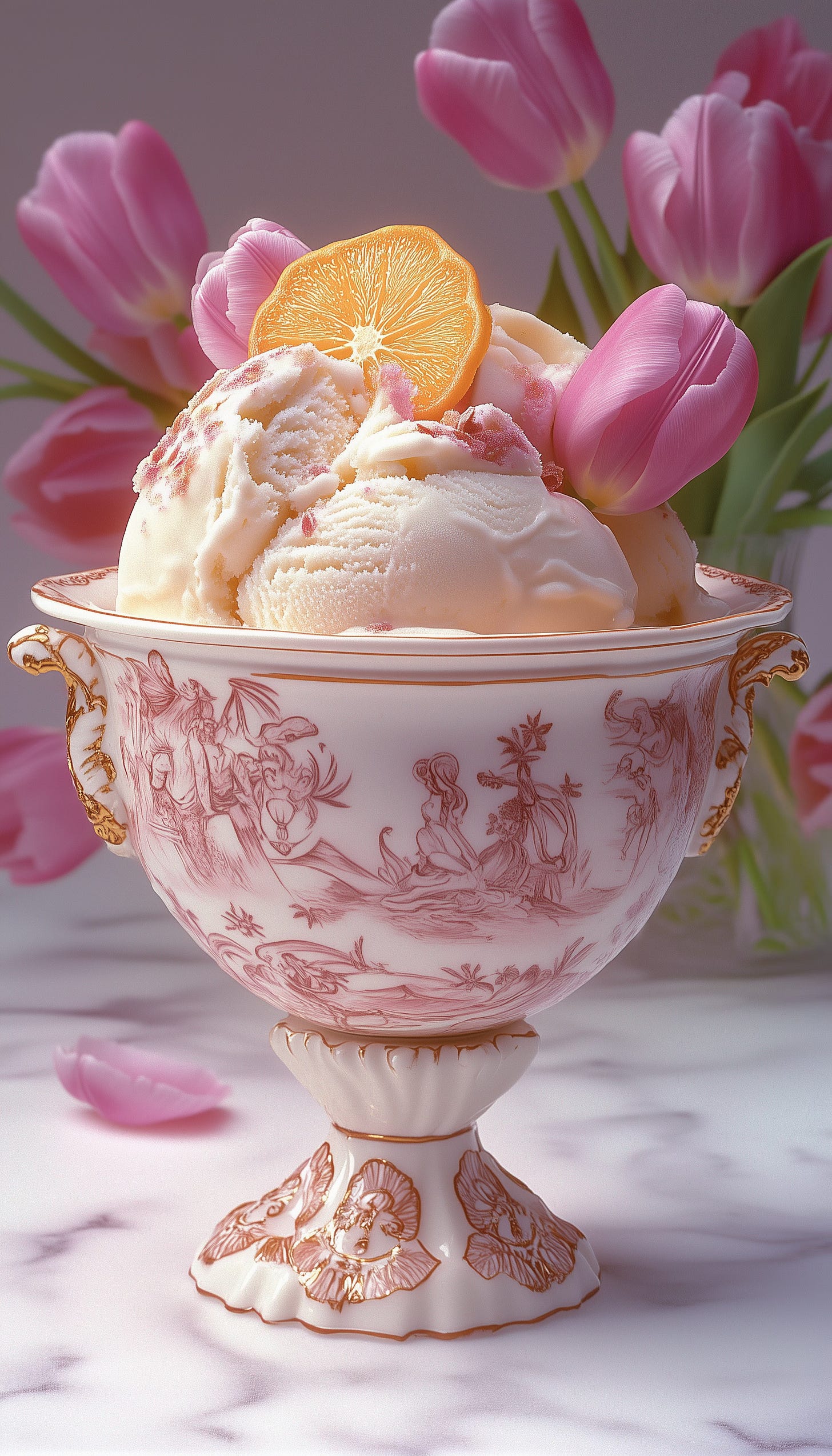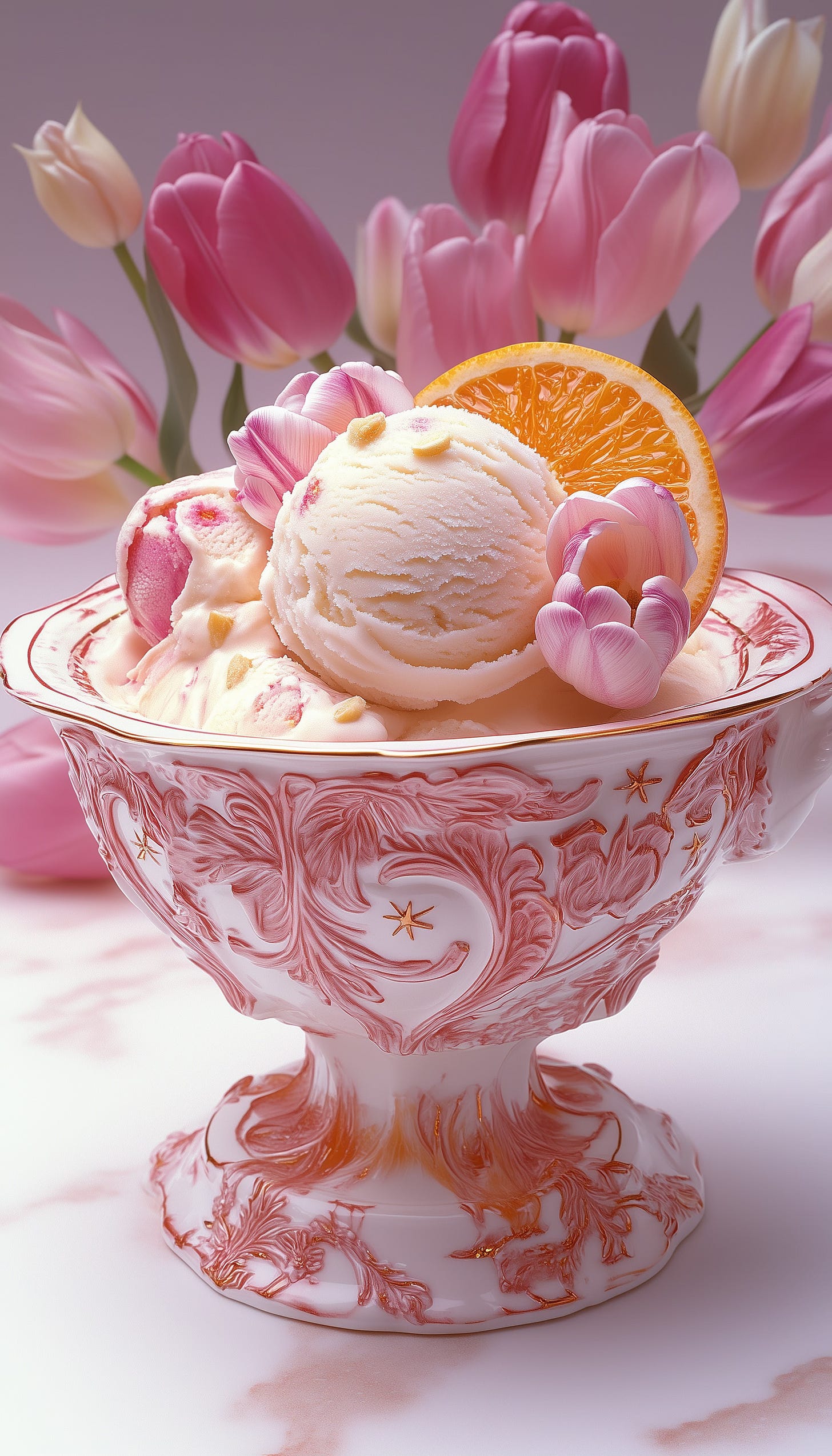🌷Tulip Temptations: From Turmoil to Table
Tulips are more than garden eye candy or symbols of springtime flirtation. These graceful blooms carry centuries of mystery, meaning, and even survival. From famine food to financial collapse, tulips have a history as rich as their vibrant petals—and in some cases, they’re literally good enough to eat.
🌼 Edible Tulips: A Floral Feast?
Yes, you can eat tulips—but with care. The petals are edible and offer flavors ranging from sweet and bean-like to peppery and crisp, depending on the variety. They’re often used in culinary decoration, adding beauty to salads, cakes, and even ice cream (we’ll get there soon). However, the bulbs are a different story—generally unsafe unless in survival scenarios and only when properly prepared.
🌍 Tulips in Times of Hunger
In the brutal winter of 1944–45, during World War II, Dutch citizens resorted to eating tulip bulbs during a period known as the Hunger Winter. Bitter and starchy, they became a desperate substitute for potatoes when famine struck. While it wasn’t gourmet cuisine, tulips helped save lives—a testament to resilience rooted in nature.
Even earlier in history, tulips were prized by the Ottoman Empire and later the Dutch, where they sparked one of the world’s first recorded financial bubbles.
🔮 Symbolism, Lore, and a Floral Financial Crash
In Persian folklore, tulips represented undying love—legend says red tulips bloomed from drops of a lover’s blood. In the 1600s, the Dutch elite became so obsessed with tulips that a single bulb could sell for more than a house. This phenomenon, known as Tulip Mania, collapsed in spectacular fashion.
Some conspiracy theorists even whisper that Tulip Mania wasn’t just hysteria but an early experiment in economic manipulation—testing how easily people could be swayed by scarcity, status, and beauty. Whether true or not, it’s a juicy reminder: we’ve been seduced by aesthetics before.
✨5 Benefits of Tulips (Beyond the Bloom)
Mood Enhancer – Tulips can elevate mood just by being visible in your environment.
Edible Beauty – When safe and organic, the petals are culinary gold.
Low-Allergen Flower – Tulips produce less pollen than many other spring flowers.
Natural Dye – The petals can tint fabric or food items a soft blush.
Symbolic Richness – From love to royalty, tulips carry deep meaning in many cultures.
🍨 Vanilla Citrus Ice Cream with Candied Tulip Petals
A perfect pairing of creamy indulgence and floral flair—this dessert turns tulips into edible art. Serve in a vintage bowl for full garden-party drama.
🌸 Ingredients
For the Ice Cream:
2 cups heavy cream
1 cup whole milk
3/4 cup sugar
1 tbsp vanilla bean paste (or extract)
Zest of 1 orange
Pinch of sea salt
For the Candied Petals:
8–10 fresh, untreated tulip petals
1 egg white (optional, for a crisp finish)
1/4 cup superfine sugar
Optional: dried edible rose petals for garnish
🥄 Instructions
Mix the Ice Cream Base:
Whisk all ingredients until sugar dissolves. Chill 30–60 mins, then churn in an ice cream maker. Freeze for at least 2 hours.Candy the Tulip Petals:
Brush petals lightly with egg white, then sprinkle with sugar. Air dry for 6–12 hours or bake at 170°F (75°C) for 15–20 minutes.Assemble & Serve:
Scoop ice cream into bowls, top with candied tulip petals, citrus zest, and optional rose petals. Serve immediately.
🌿 Tulip Tip: Use petals from white, yellow, or pale pink tulips for the mildest flavor. Always avoid treated store-bought flowers.
🧁 Final Thought
Tulips remind us that beauty and meaning can bloom in even the darkest times—and sometimes, they can even be dessert. Whether you’re healing, celebrating, or just craving something unexpected, this recipe and story is your invitation to taste the season... literally.







